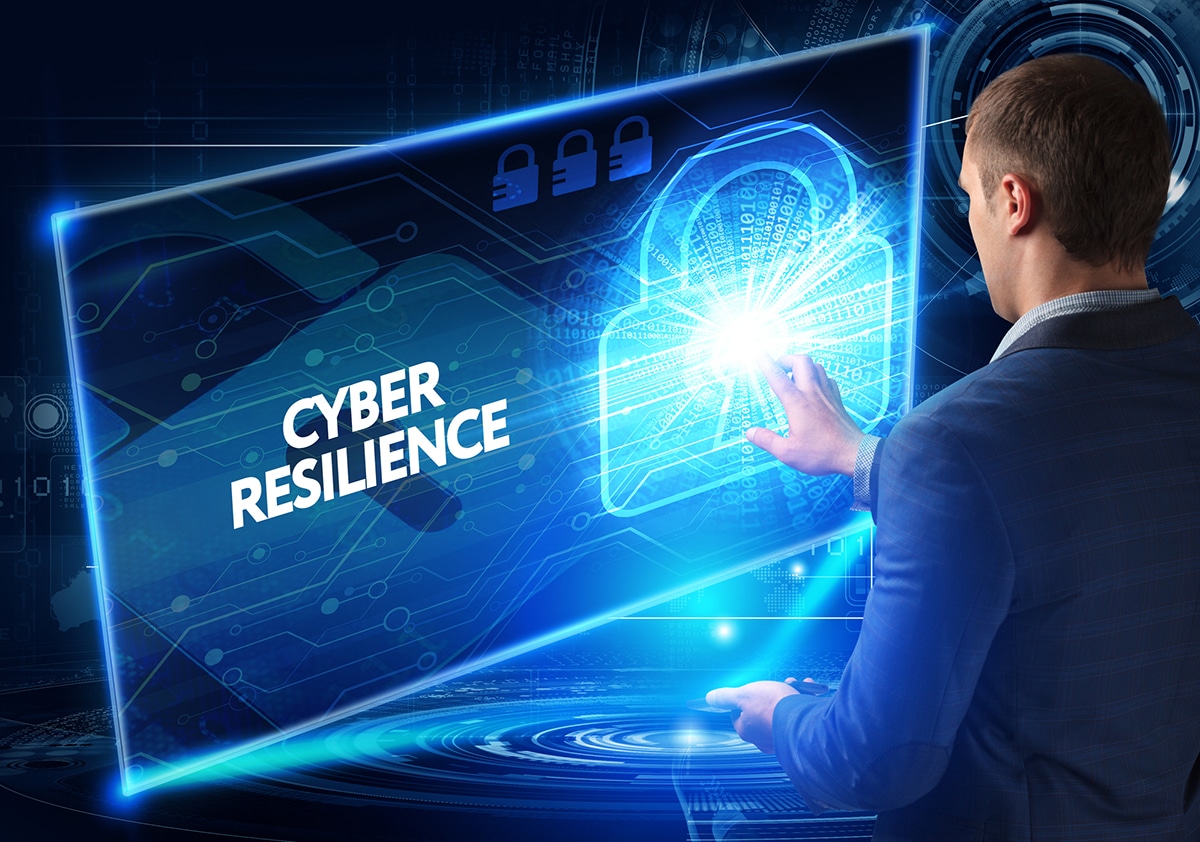
How cloud security teams should think about AI
According to estimates from Goldman Sachs, generative AI (GenAI) will constitute 10-15 percent of cloud spending by 2030, or a forecasted $200-300 billion (USD). The public cloud serves as the perfect vessel for delivering AI-enabled applications quickly, cost-effectively, and at scale. For organizations looking to profit from AI’s potential, the path effectively travels through the cloud.
For cloud security teams on the ground, however, the impact of AI can seem complicated. Understanding the challenges it presents, and the key capabilities it enables, can help them work smarter and more effectively. This article explores the three ways cloud security teams should think about AI to enhance protections, improve efficiency, and address resource constraints.

The encryption backdoor debate: Why are we still here?
Earlier this month, reports emerged that the UK government had pressured Apple, under the Investigatory Powers Act 2016, to create a backdoor into encrypted iCloud data. Unlike targeted access requests tied to specific cases, this demand sought a blanket ability to access users’ end-to-end encrypted files.
Apple was forced to reconsider its Advanced Data Protection service in the UK, and this latest development raises a fundamental question: Why does the debate over encryption backdoors persist despite decades of technological progress and repeated warnings from cybersecurity experts?

Punycode: The invisible cyber threat hiding in plain sight
The internet was conceived to connect the world, and internationalized domain names (IDNs) have certainly helped make that vision a reality. By allowing non-ASCII characters in web addresses, they’ve been pivotal in improving both accessibility and inclusivity.
As with any technological breakthrough, cybercriminals have found a way to turn innovation into exploitation. By using Punycode, a system for encoding IDNs, attackers have been able to create their own deceptive domains to mimic trusted brands and evade traditional security defenses to fool even the most wary users.

Strengthening cyber resilience -- cautious collaboration between organizations and third-party vendors needed
Ransomware is continuously on the rise. Despite multiple major law enforcement actions against ransomware groups over the past year, there has been a significant increase in ransomware attacks between 2023 and 2024. Interestingly enough, there was also a tracked 35 percent drop in ransomware payments in 2024, but it is clear that this is not stopping ransomware attacks from continuing as threat actors are finding other ways to monetize the data they’re stealing.
To combat this rise, cyber security measures within organizations need to be improved at every level, especially as the threat landscape grows even more complex. This past year has shown us that the importance of careful third-party vendor collaboration particularly must not be overlooked. With that said, there are a few considerations that need to take priority as 2025 progresses.

Right now, there is no right or wrong SASE answer
Adoption of SASE, or secure access service edge, is accelerating -- especially, according to IDC, at organizations of over 1,000 employees, while it’s estimated the global SASE market will grow from last year’s $1.83 billion to over $17 billion by 2033.
The business case for such rapid take-up is simple: SASE is the perfect way of blending the best of your network, the cloud, and cybersecurity. According to Gartner, because SASE is primarily delivered as software as a service it’s a great way to enable full zero trust access based on the identity of the device or entity, and it’s easily combined with real-time context and security and compliance policies.

Is a lack of supply chain visibility undermining board-level confidence in cyber security programs?
As we head further into 2025, organizations must focus on bolstering operational resilience and addressing third-party risks, driven not only by commercial imperatives but also by new regulatory mandates. With the enactment of regulations such as NIS2 in late 2024 and DORA early this year, supply chain risk management is now a strategic necessity.
This means that third-party cyber risk management must become a strategic priority. However, according to BlueVoyant’s fifth annual Supply Chain Defence report, which examines fast-evolving supply ecosystems, many organizations don’t appear to be prioritizing supply chain cyber risk management, or are unaware of cyber security gaps in their supply chains.

A new age of fraud: building resilience against adversary-in-the-middle attacks
From phishing scams to business email compromise, fraud is continually evolving and cybercriminals are using increasingly refined tactics to exploit vulnerabilities. Adversary-in-the-middle (AiTM) attacks are also rapidly emerging as an advanced technique that poses pervasive physical and digital risk across industries. In fact, recent research shows a 46 percent increase in AiTM attacks compared to 2023.
Staying ahead of these tactics is increasingly important as fraud becomes more complex. Before we delve into how to actively prevent fraud, we need to firstly explore the nature of AiTM attacks and then look at what’s fueling this increase in fraudulent activity.

Why it's time to guarantee resilience in our critical software
Software has become central to our daily lives, with nearly every major company relying on it to operate. We are all increasingly dependent on fault free software for almost everything we do -- whether it’s ensuring trains run on time, accessing websites or using online banking.
Software has evolved into a form of digital public infrastructure, just as vital as physical infrastructure like roads and utilities. Yet, despite its critical role, software largely goes unmonitored and unregulated.

What startups can learn from special forces strategy
On the battlefield and in the trenches of entrepreneurship, victory comes to those who dare to think unconventionally and act with precision. As a former Green Beret, I've seen firsthand how the principles of unconventional warfare can translate into the business arena. Both demand team building, strategic thinking, and adaptability in dynamic environments.
Let's break down the seven-phase model of unconventional warfare and see how it can guide a startup from its inception to market dominance.

How technical sprints can drive innovation and resolve tech debt through developer empowerment
Whilst Agile has revolutionized the way we work in software development, the pace of development is fast and delivery can feel relentless. It’s typical for developer teams to struggle to find dedicated time for R&D and to catch up with the persistent technical debt -- especially when under constant pressure to deliver the next feature or product iteration.
For developers on longer term contracts, they deliver code, release and tomorrow they’re picking up the next iteration. There’s often no time to pause to celebrate success and take a break. In fact, the risks of team burnout and technical debt accumulating to worrying levels are very real.

The future is AI, zero trust, satellite, and network slicing
Industry 4.0 is revolutionizing how enterprises need to operate. Integrating cloud technology, robotics, mobile devices and IoT devices is essential to staying ahead in an increasingly competitive global market. To maximize the benefits of Industry 4.0, however, these technologies must always stay connected to a network.
This has become even more true as IT environments grow to massive scales and unprecedented digital dependencies drive business outcomes. In 2025, network downtime could carry a price tag with consequences we’ve never seen before. Therefore, as businesses look to cellular and/or hybrid approaches to enhance their wireless wide area networks (WWAN), they must depend on four things to create resilient connectivity -- artificial intelligence (AI), satellite, network slicing, and a renewed respect for zero-trust principles.

AI in finance changes everything
Artificial intelligence’s rise in business, while exciting for some, is unsettling for financial professionals. They worry AI will replace them, but understanding its true power in finance turns fear into opportunity. AI isn’t here to take over -- it’s here to level up the game. The real power lies in collaboration, not competition. Finance pros who embrace AI don’t get replaced; they get supercharged.
Traditional tedious and time-consuming tasks that keep accountants bogged down -- data entry, invoice processing, reconciliation, reporting, and more -- can now be managed by AI-powered automations. Companies gain two key benefits when they embrace the shift. First, human finance professionals are delivered from the day-to-day routine and freed up to focus on fine-tuning financial strategies in a way that can drive better business outcomes. The demands of manual accounting typically keep finance professionals from having any time to zoom out and deal with big-picture planning.

Unpatched software: The silent gateway to cyber attacks and how AI-driven solutions can close the gap
Modern enterprises are under fire from all angles. Attackers have become increasingly sophisticated and persistent in how they target enterprise data and systems. But as the threat landscape has evolved and become more complex, one tried and true method for malicious attackers stands out as a weak point for nearly every enterprise attack surface: outdated software. As much as patch management has advanced in recent years, the fact remains that most organizations struggle to deploy patches consistently and effectively, and that leaves systems exposed to cyber attacks.
Cybercriminals have become quite adept at exploiting unpatched software, using it as an easy entry point into enterprise networks. Malicious actors have developed an incredibly sophisticated understanding of where enterprise weak points are. In fact, most criminal operators have a deeper understanding of enterprise attack surfaces than the security teams tasked with defending them. Enterprise networks often consist of hundreds of thousands of IT assets, and every single unpatched instance represents an opportunity for attackers to compromise data and operations.

Crossing the divide: How IT and OT can work together to secure the future
In cybersecurity, the divide between IT (Information Technology) and OT (Operational Technology) remains a problem that practitioners, vendors, and consultants must navigate daily. The differences between these two mindsets -- one rooted in the world of delivering data and maintaining software, the other firmly planted in the realm of continuous uptime of industrial systems -- can lead to conflicting priorities and misunderstandings. Even as the industry strives to align these domains, this divergence is still evident, as I was reminded just this week.
During my usual morning LinkedIn browsing, I stumbled upon a post featuring the “Top 50 People in ICS/OT Cyber Security You Need to Follow”. At first glance, I panicked. My immediate assumption was that the list featured individuals responsible for securing operational environments -- the unsung heroes safeguarding critical infrastructure around the globe.

IT industry today faces same issues that aggravated 1990s manufacturing: How can we take a cue from history?
Until the late 1990s, manufacturing reigned as the lifeblood of the global economy -- leading in productivity, employment, growth, and investments across all points of the world. However, once we neared the close of the 20th century, manufacturing found its Achilles heel in the compounded complexity accrued from outdated processes, an over-reliance on human labor that simply couldn’t meet its extreme needs, supply chain disruptions, and rising costs.
I fear that today, the information technology industry finds itself at all-too-familiar cross-roads. Why is this?

